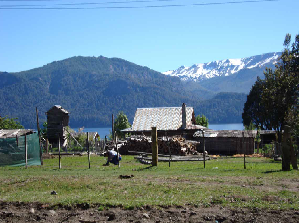Abstract
This paper analyse the begining of protected areas in Argentina, in regards to the construction and consolidation of State and Nation in Norpatagonia. It recovers the figure of Francisco Moreno and Exequiel Bustillo, two key characters in the creation of protected areas and in the symbolic imprint to Patagonia Argentina. It is put forward that the bases of the founding ideology of National Parks, are based in these characters backgrounds, political linkages and proposals, which highlighted the role of nature as inspiration for the values of the country. In addition, the analytical category of heritage activation is used in order to delve into the question about why certain natural areas are valued as heritage of the whole nation and therefore should be preserved. The results presented here come from work with historical sources and fieldwork, as part of an investigation in the Los Lagos Department, province of Neuquén, Argentina, territory that integrates the Nahuel Huapi National Park.
Apuntes is registered under a Creative Commons Attribution 4.0 International Public License. Thus, this work may be reproduced, distributed, and publicly shared in digital format, as long as the names of the authors and Pontificia Universidad Javeriana are acknowledged. Others are allowed to quote, adapt, transform, auto-archive, republish, and create based on this material, for any purpose (even commercial ones), provided the authorship is duly acknowledged, a link to the original work is provided, and it is specified if changes have been made. Pontificia Universidad Javeriana does not hold the rights of published works and the authors are solely responsible for the contents of their works; they keep the moral, intellectual, privacy, and publicity rights.
Approving the intervention of the work (review, copy-editing, translation, layout) and the following outreach, are granted through an use license and not through an assignment of rights. This means the journal and Pontificia Universidad Javeriana cannot be held responsible for any ethical malpractice by the authors. As a consequence of the protection granted by the use license, the journal is not required to publish recantations or modify information already published, unless the errata stems from the editorial management process. Publishing contents in this journal does not generate royalties for contributors.


